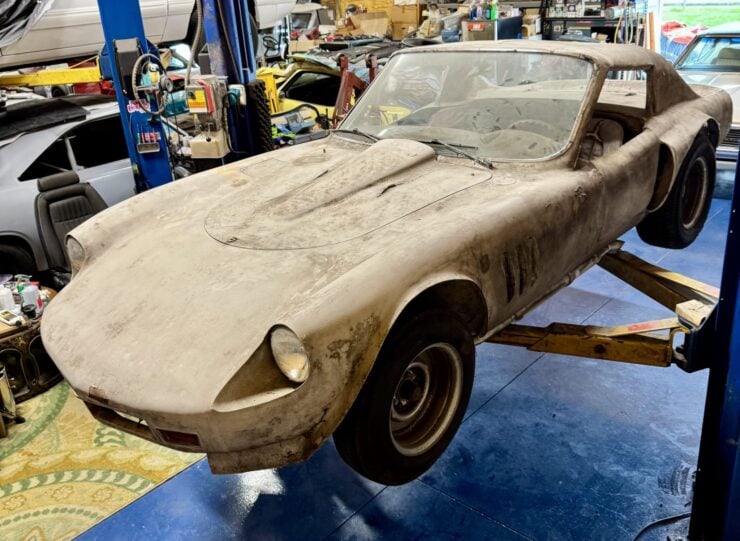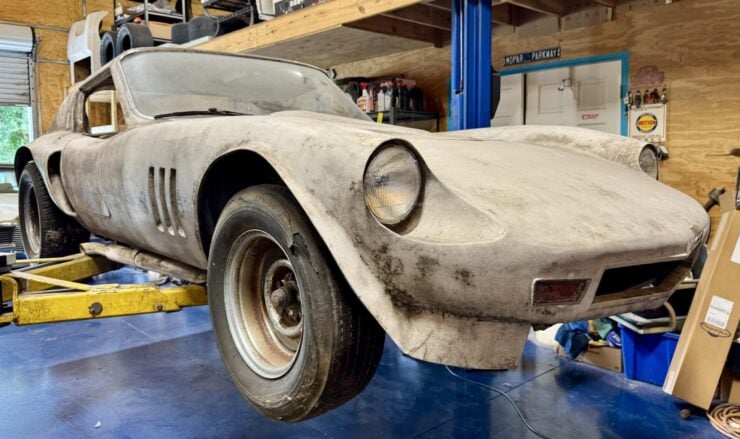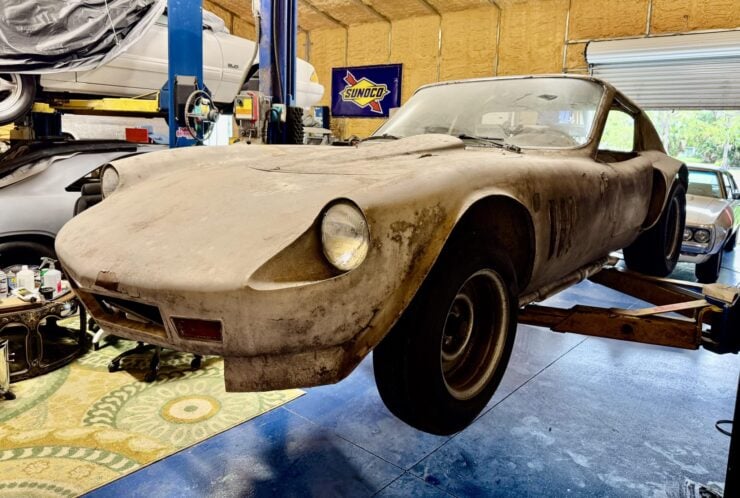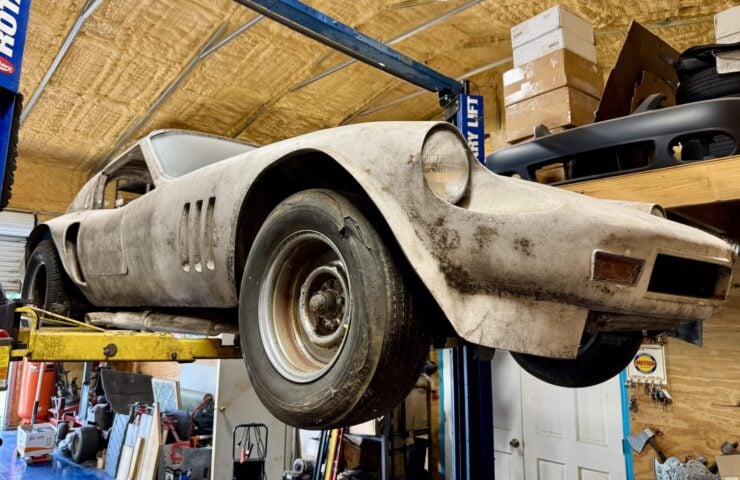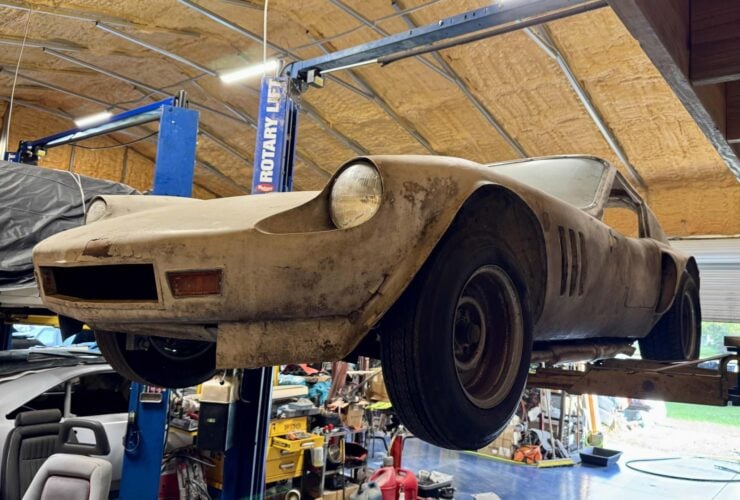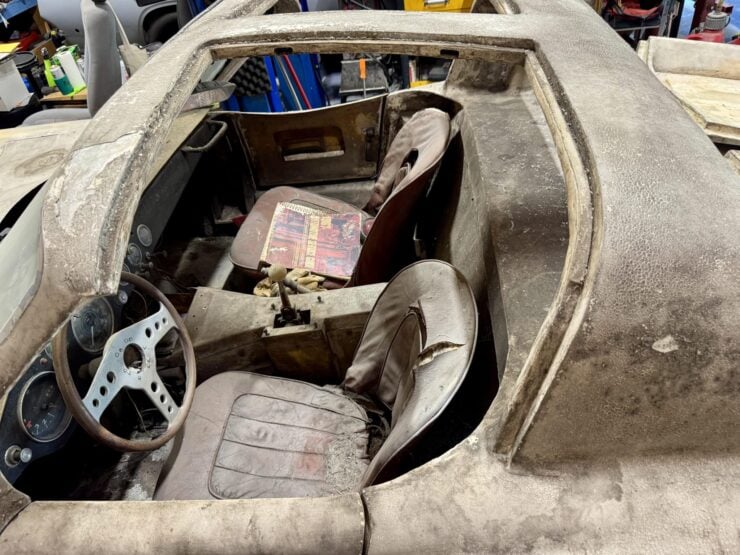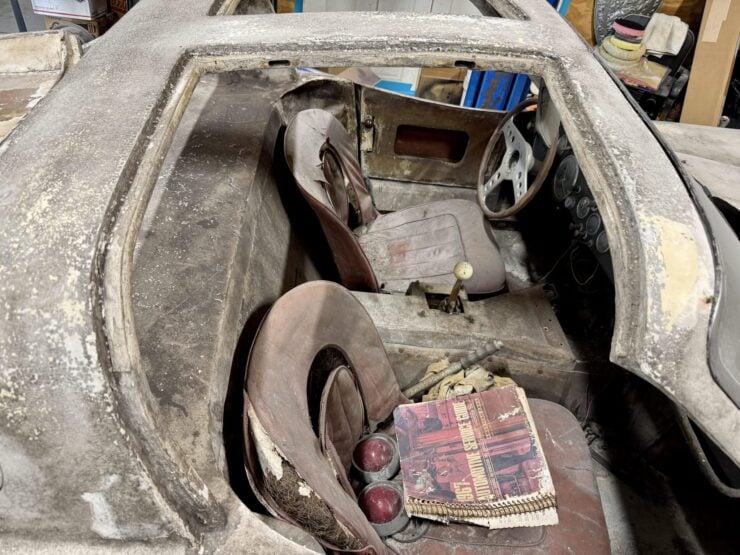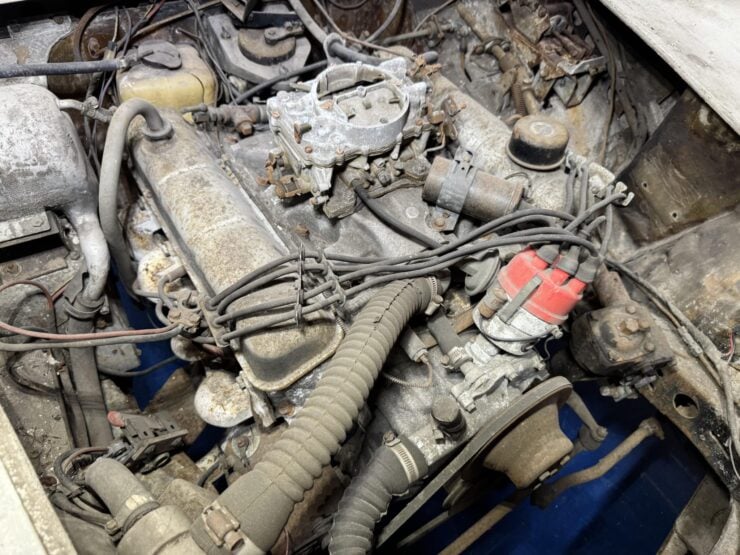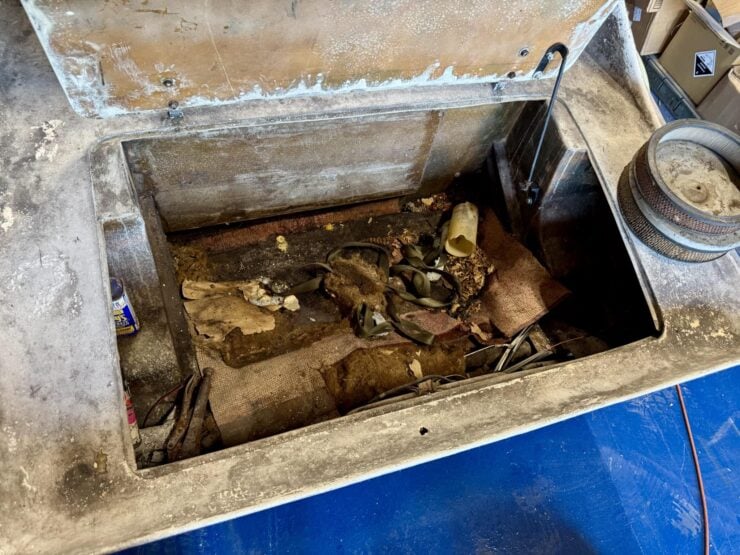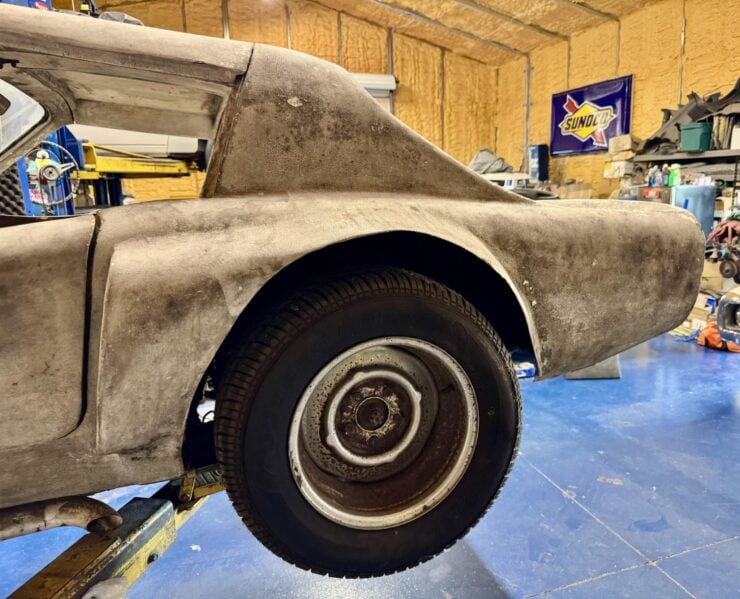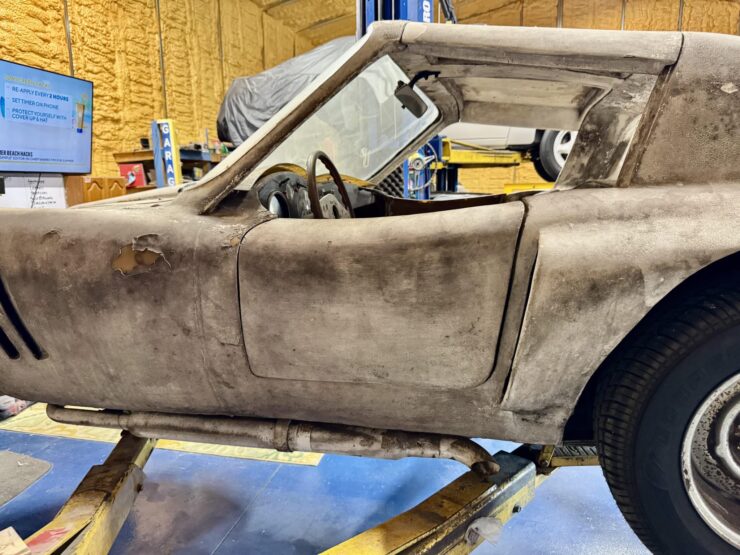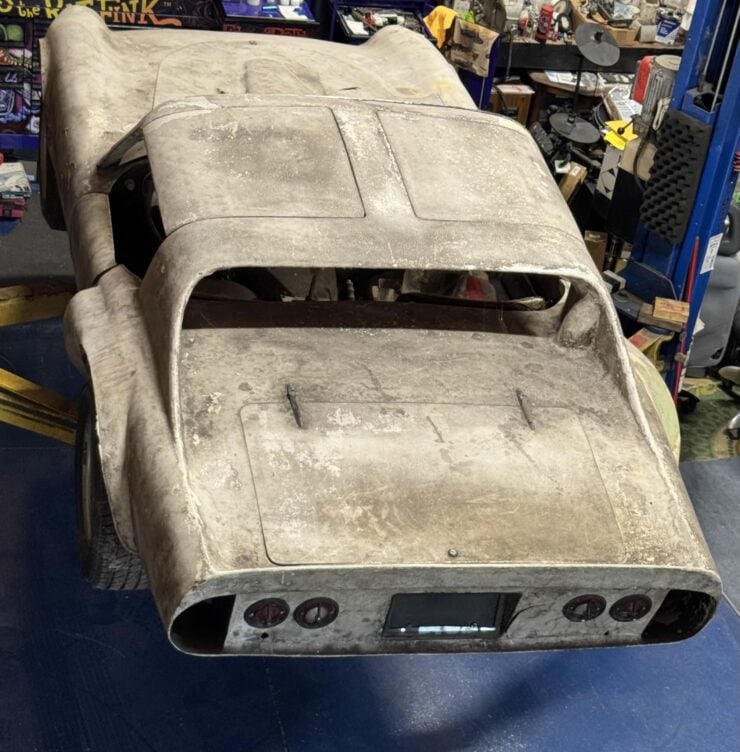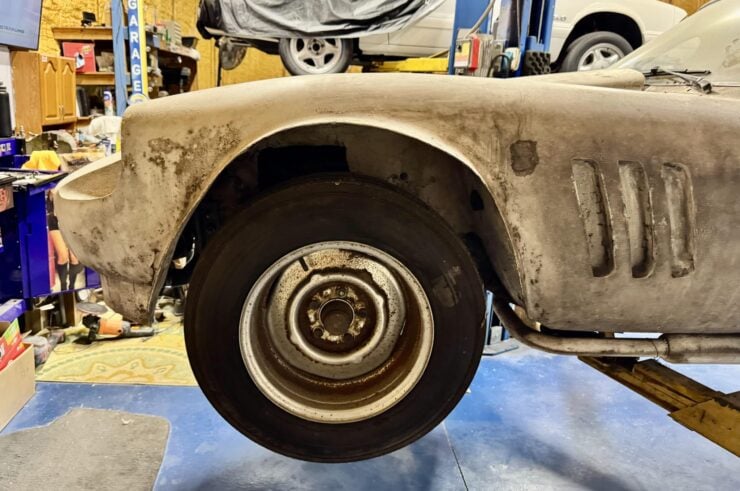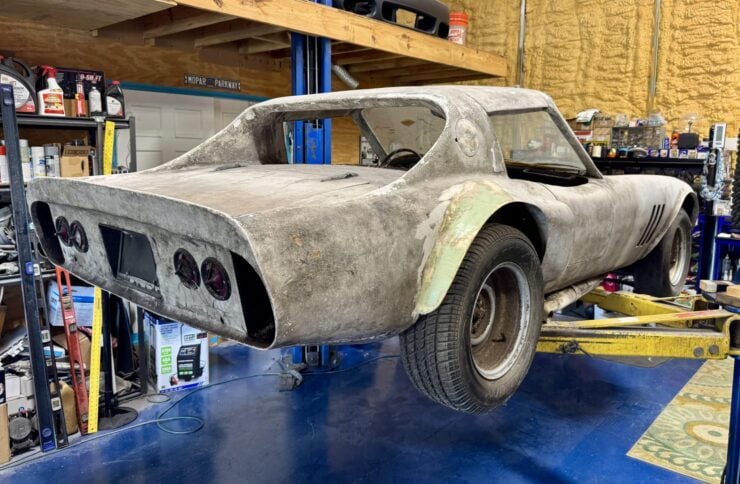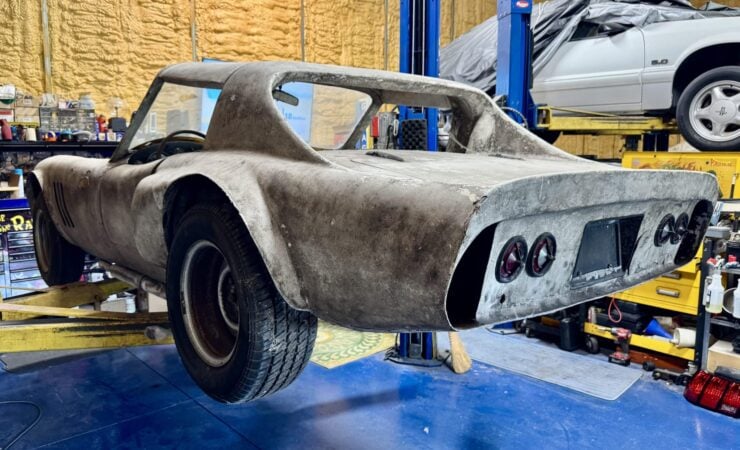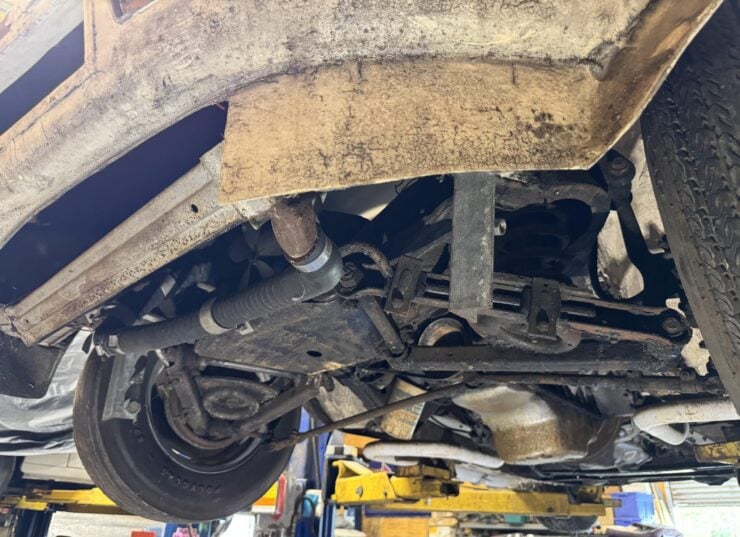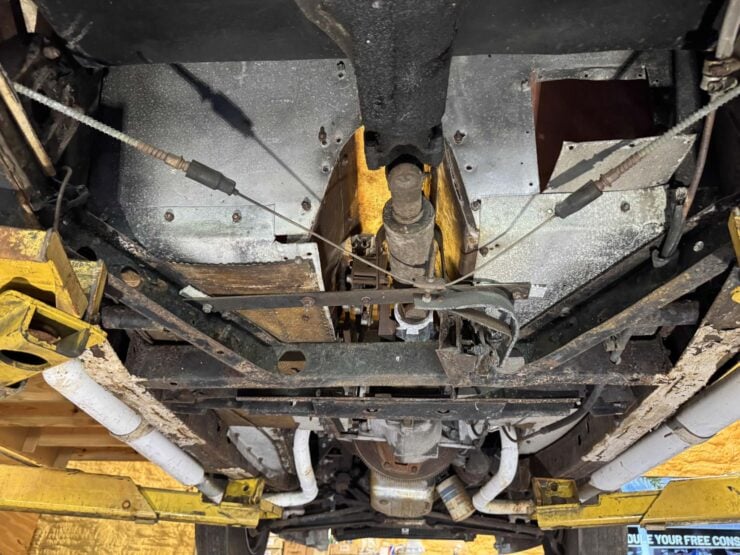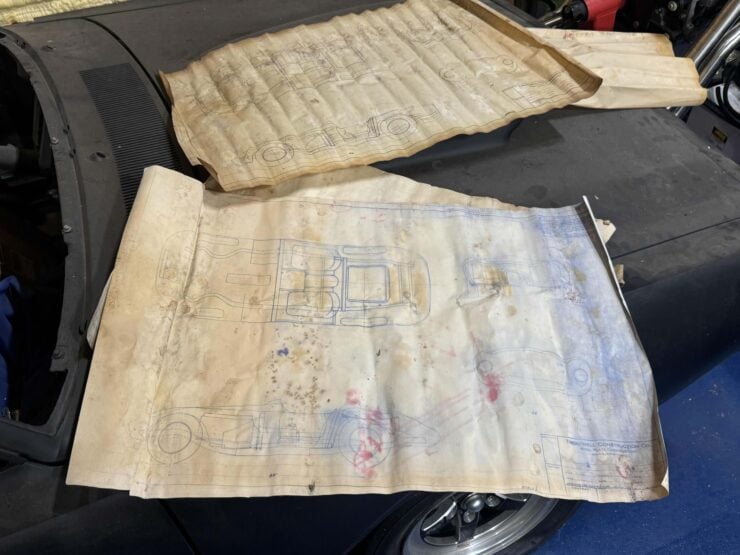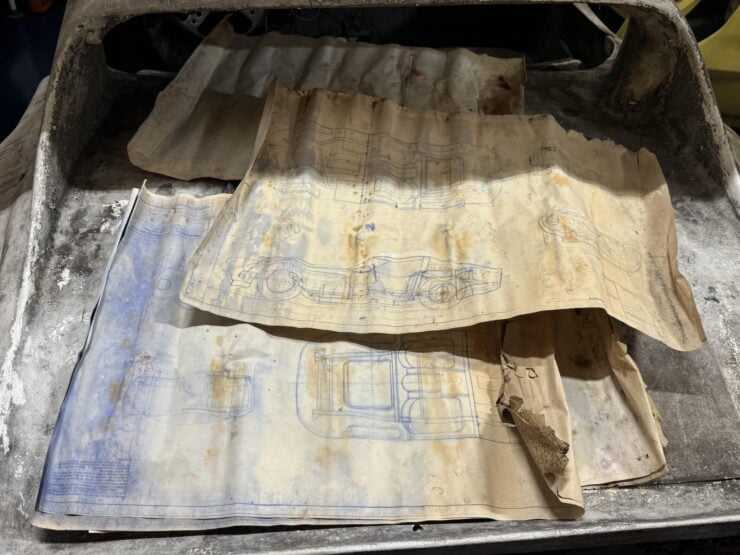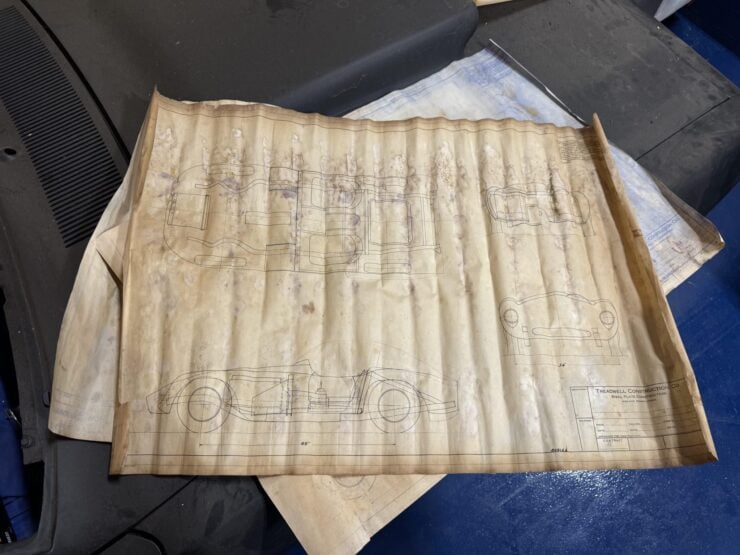This is a one-off sports car that was first registered in 1963 in Florida. It’s based on a 1951 Henry J chassis, and it’s powered by an all-aluminum 215 cubic inch Buick V8 mated to a Muncie 4-speed manual transmission.
Unusual low-volume and one-off builds like this became a major cottage industry in the 1950s and into the 1960s, with enterprising builders either ordering kits or building the cars to plans in their own garage.
Fast Facts: A One-Off Henry J-Based Sports Car
- The Henry J was launched by Kaiser-Frazer in 1950 as a bare-bones economy car, aiming to offer low-cost transportation to Americans who might otherwise buy used. It was powered by modest four or six-cylinder engines, and early models omitted features like a trunk lid or glovebox to keep costs down.
- Though it saw only moderate success, the Henry J became popular with hot rodders and drag racers due to its small size, lightweight construction, and its ability to accept V8 swaps. Fewer than 132,000 examples of the Henry J were made before production ended in 1954 following Kaiser’s merger with Willys-Overland.
- The 1963 one-off sports car in question was built on a 1953 Henry J chassis and later upgraded with an all-aluminum 215 cubic inch Buick V8, a Muncie 4-speed manual, and a Triumph rear axle. It has a fiberglass body and was originally equipped with an inline-six.
- Constructed in the 1960s by a relative of the current seller, the car was stored for over 40 years before resurfacing in 2024. It’s now offered in barn find condition out of Fort Pierce, Florida, complete with spare parts, blueprints, and an extra engine.
History Speedrun: The Henry J
The Henry J was introduced in 1950 by the Kaiser-Frazer Corporation as a compact, affordable car aimed at cost-conscious American buyers. Named after company chairman Henry J. Kaiser, the car was intended to provide basic transportation at a low price point for people who would otherwise be buying a secondhand car.
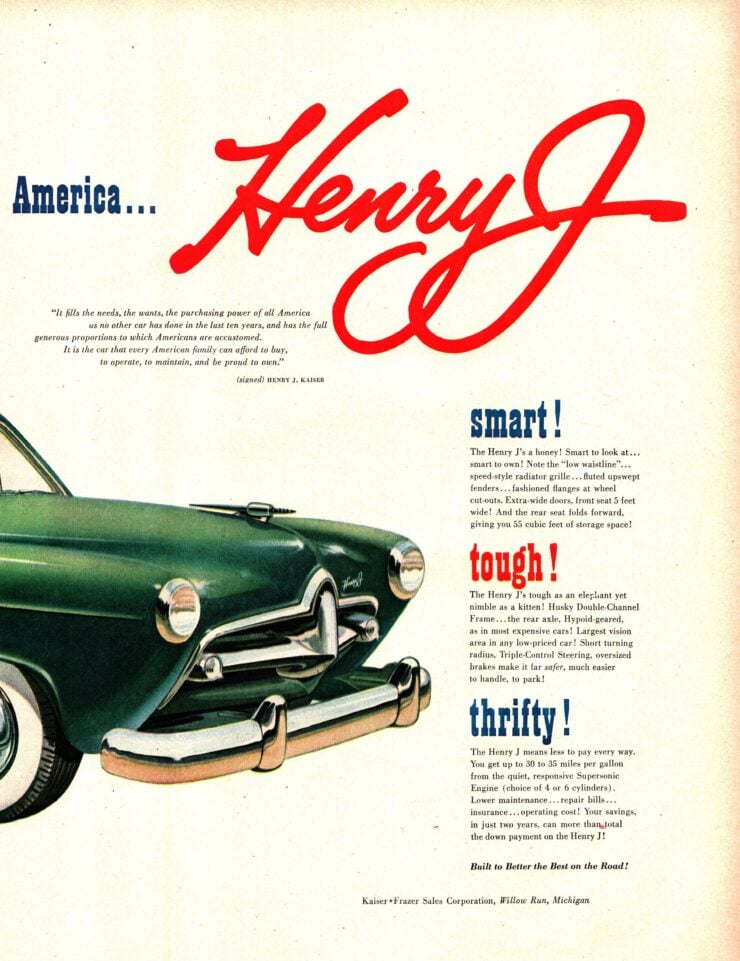

This approach by Kaiser-Frazer diverged significantly from the increasingly feature-rich, larger, and heavier vehicles dominating postwar American roads. The Henry J would be a major influence on the generations of more affordable compact cars that would come in the decades to follow.
The Henry J project received a boost from the US Government’s Reconstruction Finance Corporation, which loaned Kaiser-Frazer $44 million under the condition that the new car would be priced below $1,300, seat five adults, and be able to sustain a speed of at least 50 mph.
To meet these conditions, the Henry J was designed with minimal frills. Early models lacked trunk lids (access was through the rear seat), came without glove compartments or passenger sun visors, and were offered with fixed rear windows and only two-doors. These omissions reduced both cost and complexity but also limited the appeal of the car.
Mechanically, the Henry J was powered by either a 134 cubic inch (2.2 liter) four-cylinder engine sourced from Willys or an optional 161 cubic inch (2.6 liter) six-cylinder. Both engines were paired with a 3-speed manual transmission. The car shared some of its underpinnings with the Willys Aero and Jeep station wagons – a result of corporate ties and essential cost-saving measures.
Sales of the Henry J began in 1950 for the 1951 model year. Initial demand was modest, however the novelty of a no-frills American economy car wore off quickly. Competition from more established automakers offering better-equipped models at prices that were just a couple of hundred dollars more left the Henry J in a difficult position.
Kaiser attempted to boost sales with cosmetic updates and even a badge-engineered version marketed through Sears, Roebuck under the “Allstate” name, but neither of these moves significantly improved its fortunes.
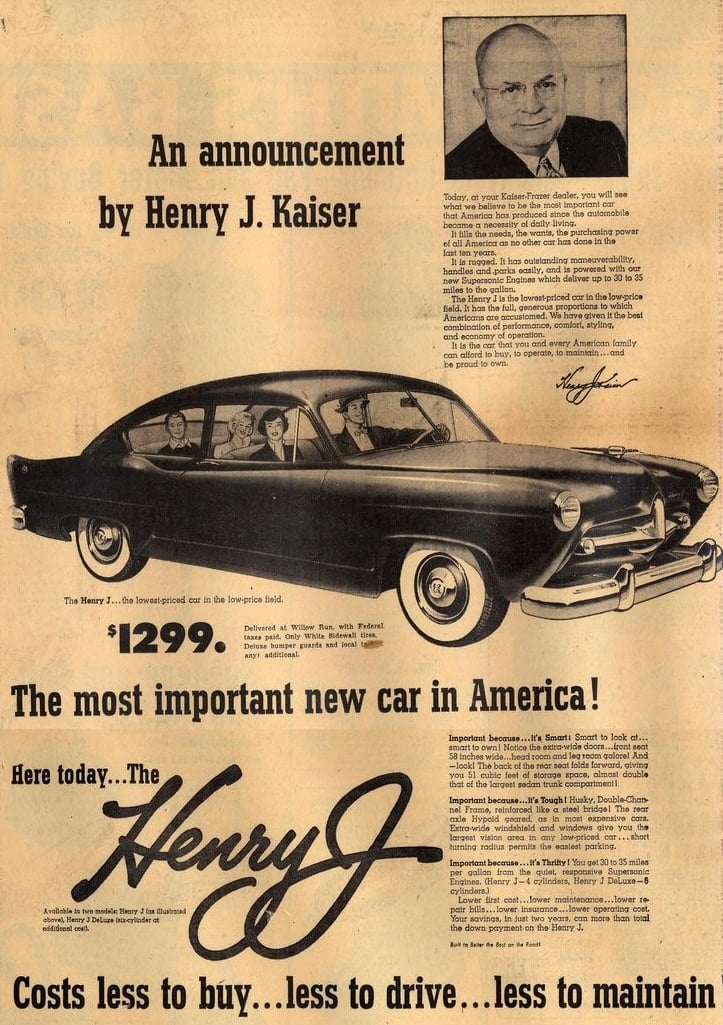


Production of the Henry J continued through the 1954 model year, though by that point, Kaiser had merged with Willys-Overland and shifted focus to Jeep utility vehicles which were strong sellers – no one knew it at the time but this was an indication of just how popular SUVs would become in the decades to follow.
Fewer than 132,000 Henry Js were built in total. While it never achieved mass-market success, the Henry J later found a niche among drag racers due to its small size and relatively low weight, making it a popular candidate for modification in the early gasser era. The small chassis could be modified with the fitment of a V8, a new transmission and axle, and it would create a genuine 1/4 mile contender.
The Henry J remains a footnote in postwar American automotive history – a rare example of a domestic attempt to build an economical compact car in a market that largely preferred bigger and better-appointed vehicles.
It may not have been a major commercial success, but it would be one of the critical primordial designs that would lead to the development of the modern compact car.
The 1963 One-Off Sports Car Shown Here
The car you see here is a one-off sports car that was built on a 1953 Henry J chassis, it has a fiberglass body and it’s powered by an all-aluminum 215 cubic inch Buick V8 mated to a Muncie 4-speed manual transmission with power sent back to a Triumph axle in the rear.
The Henry J chassis was used for many homebuilt sports cars in the 1950s and beyond due to its smaller size and lower weight – it could also be fitted with V8 engines which would launch performance into the stratosphere.
Exactly who built this car isn’t mentioned in the listing, we do know that it was built by the seller’s relative sometime in the 1960s, and that it spent more than four decades in storage before ownership passed to the seller in 2024.
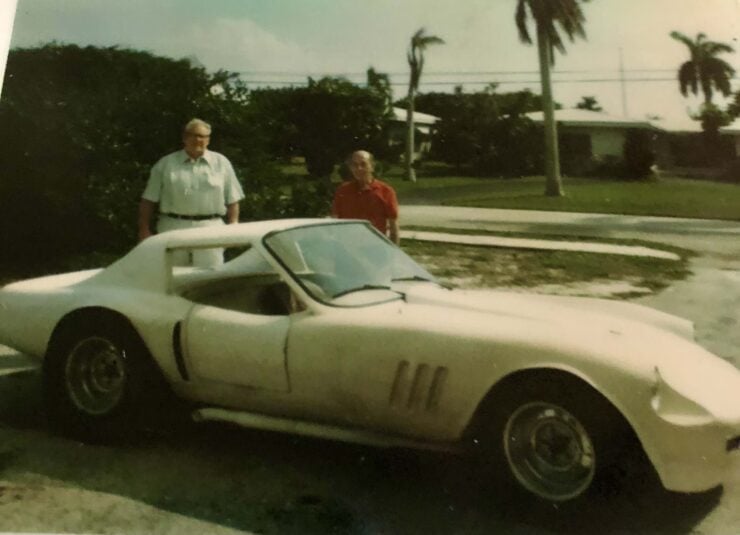


The car was originally built with an inline-six, but that was swapped out for the lightweight Buick V8 later in the car’s life. It’s clearly now in barn find condition, but it could make a good project for the kind of people interested in unusual automotive archaeology like this.
If you’d like to read more about it or place a bid you can visit the listing here. It’s being offered for sale out of Fort Pierce, Florida and it comes with an extra engine, spare parts, and blueprints.
Images courtesy of Bring a Trailer


